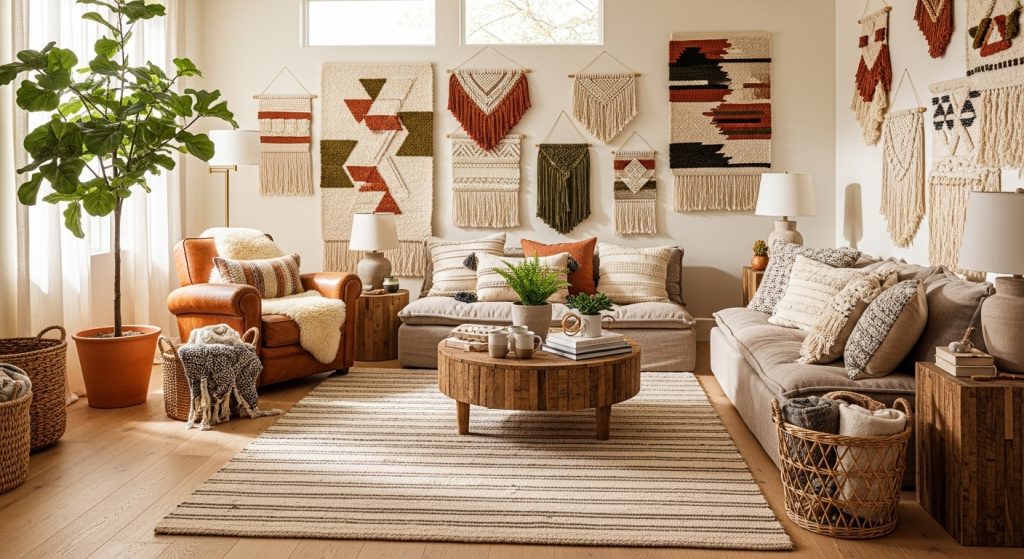Imagine stepping into a room where the walls tell stories. Instead of blank surfaces, you see soft woven art — patterns, colors, and textures that make the space feel instantly warm. That’s the magic of creative wall rug placement ideas.
For centuries, people have used rugs as both floor coverings and decorative wall art. From Persian tapestries to modern boho weaves, wall rugs bring charm and a touch of soul to any room. They blend art, history, and comfort — all in one frame. If you’re looking to add warmth and character to your décor, explore creative wall rug placement ideas that turn any plain wall into a stunning focal point.
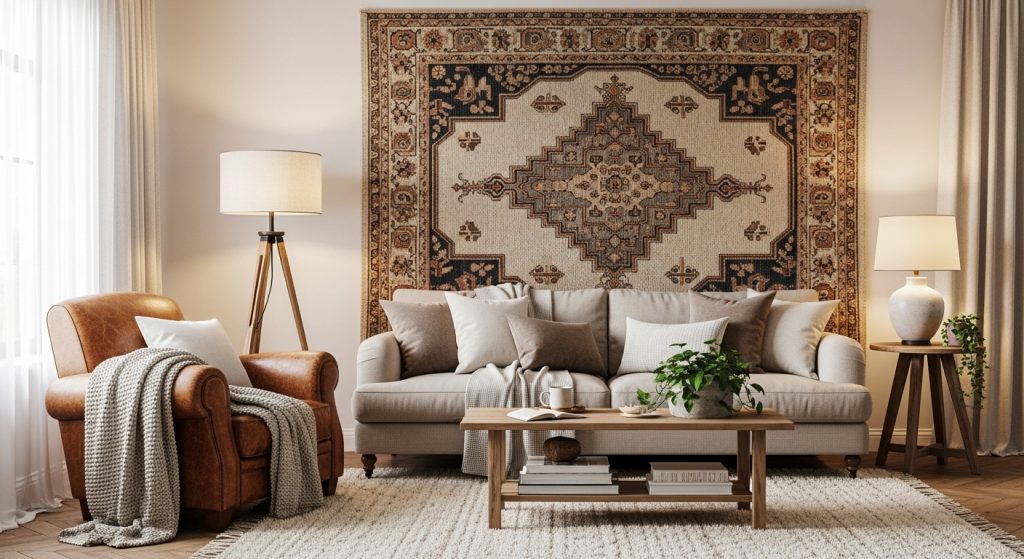
Why Wall Rugs Are the New Art
In today’s interiors, texture matters as much as color. Designers from Elle Decor and Architectural Digest agree that wall rugs create depth, absorb sound, and make rooms feel grounded. Unlike framed art, rugs add a three-dimensional softness that invites touch — making them an essential part of modern wall rug placement ideas for adding warmth and visual balance to any space. The same design philosophy can be seen in decor approaches that highlight natural, budget-friendly elements — where materials like bamboo and other organic textures bring a grounded, serene beauty to the home.
They also allow flexibility — you can move, layer, or rotate them seasonally. Think of it as curating a living gallery. With the right wall rug placement ideas, even the simplest home feels handcrafted and soulful.
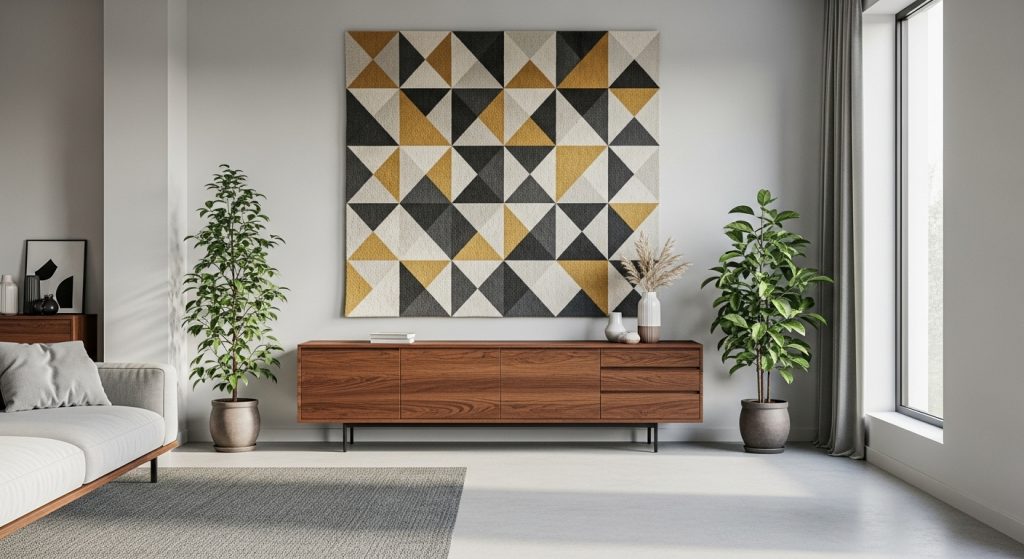
Choosing the Perfect Rug for Your Walls
Not every rug belongs on the wall. Lightweight woven or flat-weave rugs work best. Natural fibers like wool, jute, or cotton offer warmth and durability. Vintage kilims, tribal prints, or tufted designs add personality.
Before hanging, make sure the rug’s colors complement your room palette. According to House Beautiful, warm hues like rust, ochre, and cream enhance coziness, while cool tones like sage and navy evoke calm.
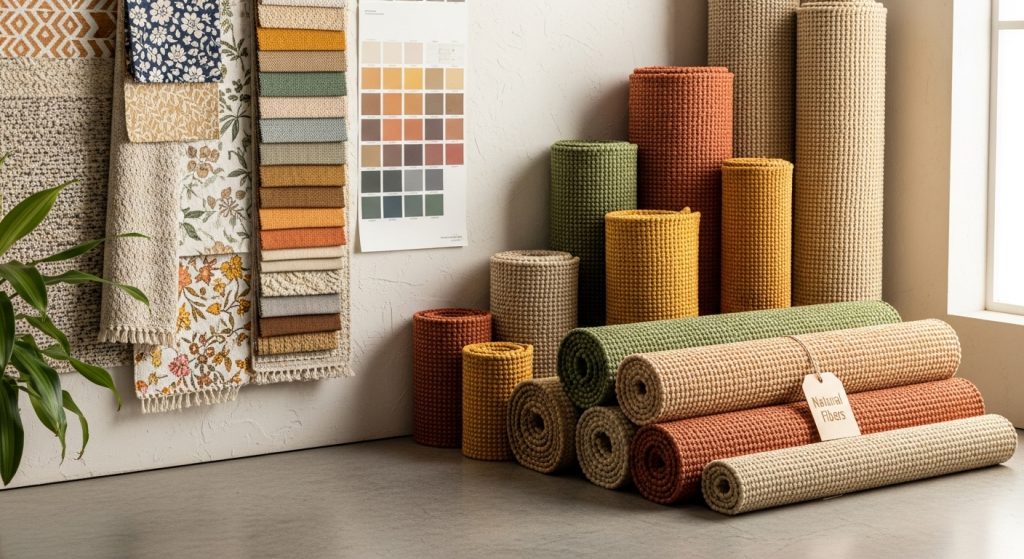
Above the Sofa Framing Your Focal Point
The area above your sofa is the perfect spot to experiment. A large rug can serve as a visual anchor, tying together furniture, cushions, and lighting. It replaces the need for oversized art while adding tactile appeal.
For smaller sofas, consider layering a central rug with a thin wooden dowel or metal rod for structure. Keep spacing consistent so the rug “floats” about 6–8 inches above the backrest.
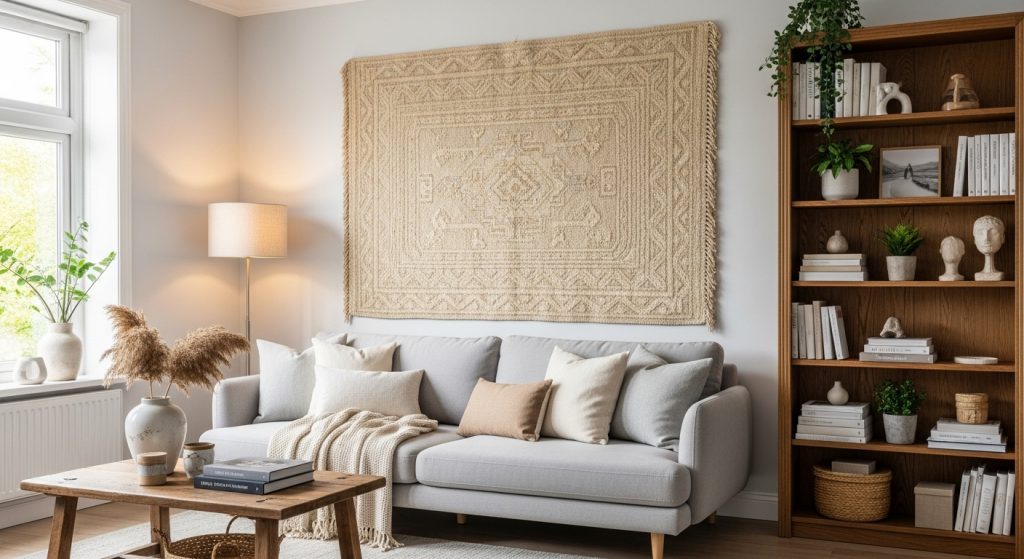
Bedroom Serenity Rugs Behind the Bed
Bedrooms thrive on softness. Instead of a traditional headboard, use a woven rug as your statement piece. This instantly introduces texture and warmth, especially in minimalist spaces.
Choose calming patterns — think coastal blues, muted greens, or natural beige tones. Pair with linen bedding and subtle lighting for a peaceful vibe. As Better Homes & Gardens notes, tactile wall art helps bedrooms feel layered and inviting.
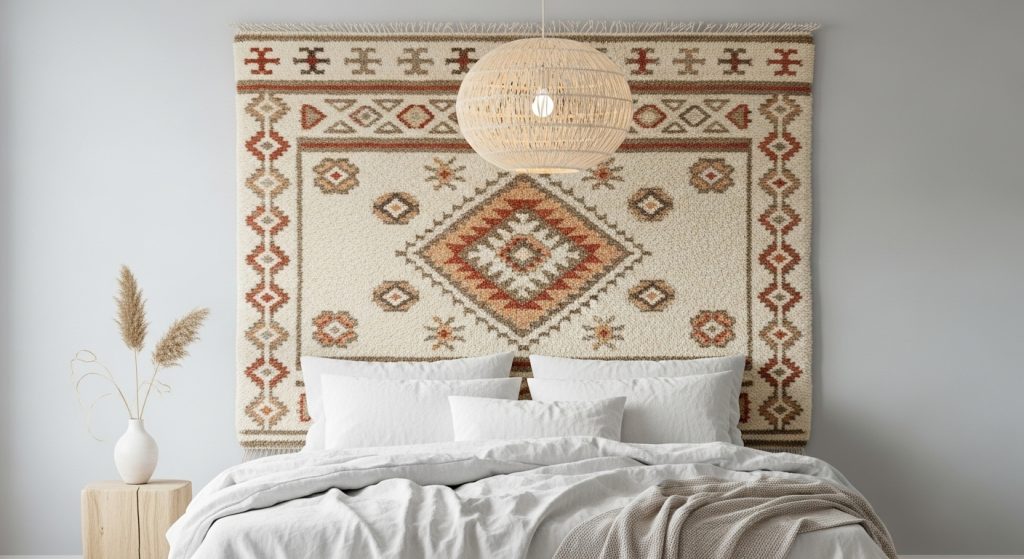
Dining Area Accent Adding Texture Without Clutter
Dining rooms often lack soft elements, which can make them feel echoey or cold. Hanging a rug behind your dining table absorbs sound and introduces pattern without crowding the floor.
Balance scale carefully — a rectangular rug works best for long tables, while circular designs complement round tables beautifully. Keep color coordination subtle so the rug enhances, not distracts.
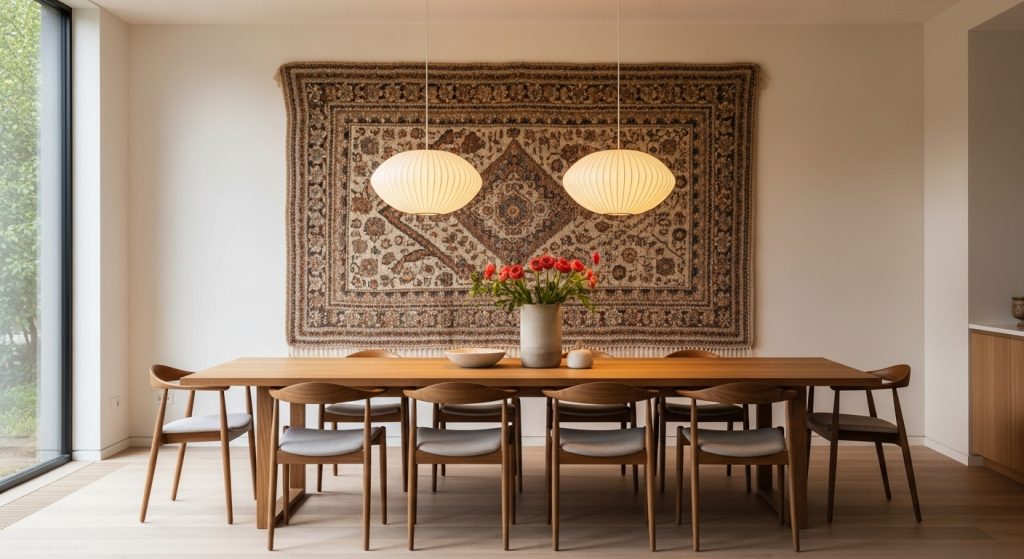
Hallways and Entryways Welcoming Texture
Entryways set the tone for your home. A vertical hanging rug here can soften the look instantly. Go for durable, easy-to-clean textiles, especially if the area gets direct sunlight or foot traffic.
Vintage runners work beautifully when hung vertically. Use them to draw the eye upward, making small spaces appear taller. As Domino Magazine explains, wall rugs help hallways feel curated rather than forgotten.
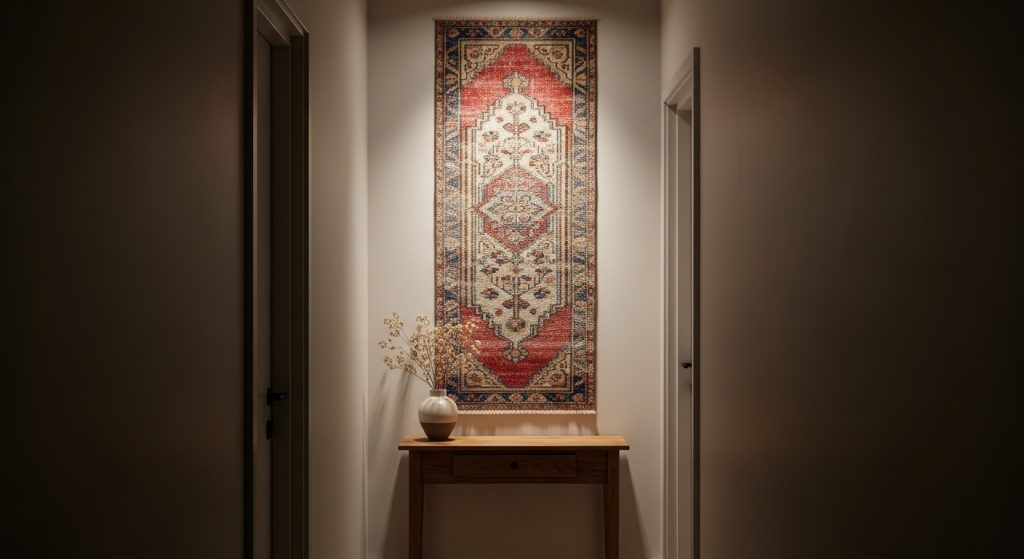
Gallery Walls with a Twist
Who says gallery walls must be all frames and photos? Mix art prints, mirrors, and one statement rug for a layered, collected look. The contrast between soft textiles and hard frames adds visual interest.
Keep one color theme to avoid clutter. For example, neutral rugs pair well with black-and-white photos, while patterned rugs enhance eclectic decor.
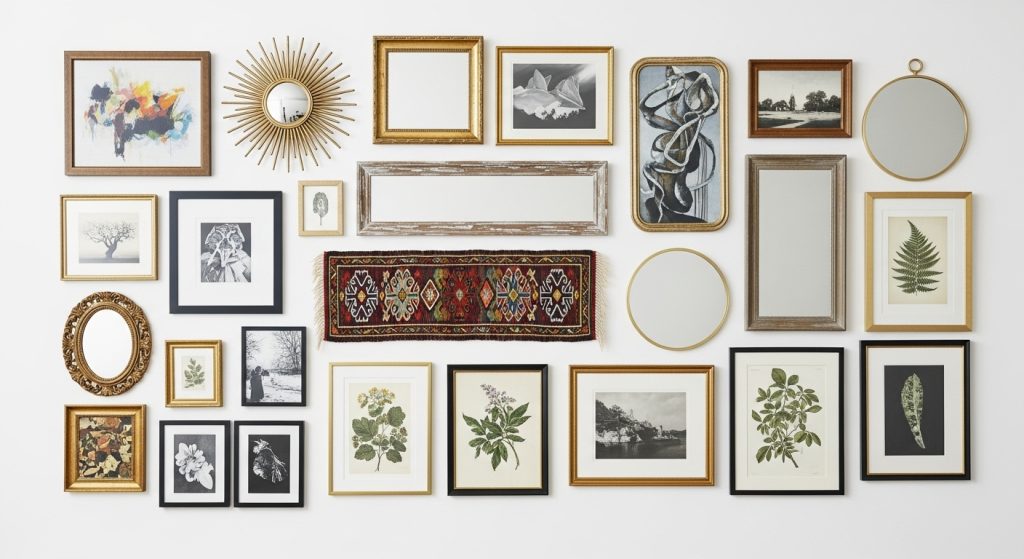
Hanging Techniques That Protect Your Rug
Mounting matters as much as design. Use a sleeve or rod pocket sewn along the back to distribute weight evenly. Avoid nails or adhesives that may damage fibers.
For heavier rugs, wooden battens or clips are ideal. Always keep rugs away from direct sunlight to prevent fading, and vacuum them gently to preserve their beauty.
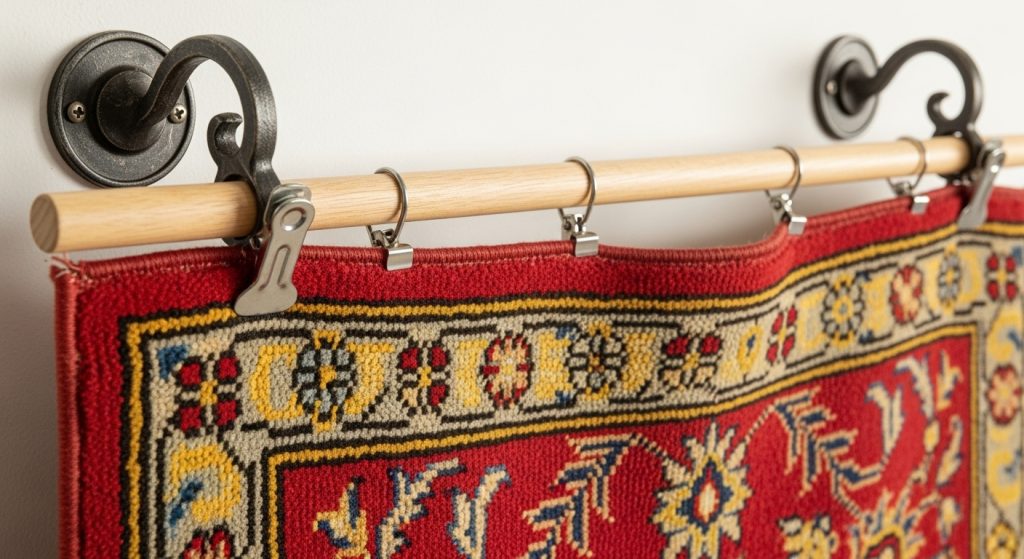
Layered and Bohemian Vibes
Boho interiors celebrate imperfection and texture. Layer small rugs side by side or overlap them for an artistic feel. Combine macramé hangings with patterned kilims or Moroccan-style pieces.
Stick to a cohesive color story neutral bases with one or two accent tones work best. Apartment Therapy suggests combining handmade textiles for authenticity and charm.
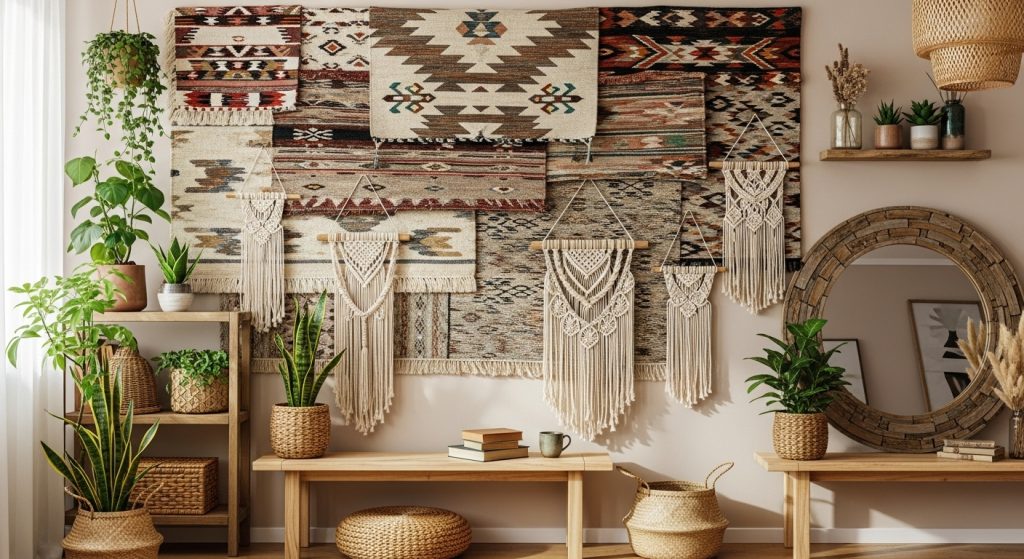
Conclusion: Texture That Tells a Story
Your home should reflect who you are warm, unique, and full of life. Rugs on walls do more than decorate; they narrate. Each piece holds history, craftsmanship, and personal meaning.
Start small. Choose one wall, one rug, and see how the space transforms. Whether you love vintage finds or modern weaves, the right wall rug placement ideas can make your home feel personal and deeply comforting.
